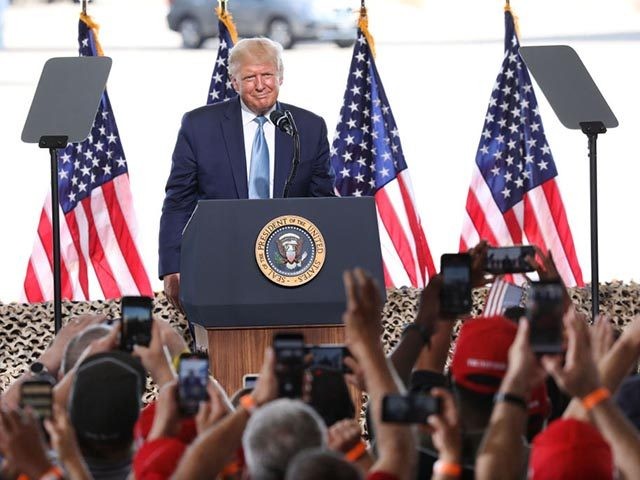Legal immigration into the United States dropped by almost half from October 2019 to October 2020, says a report by the Cato Institute.
“The second half of [fiscal year] 2020 saw 92 percent fewer immigrants from abroad than the first half, which was larger than any annual decline in the history of the United States,” said the October 13 report by migration advocate David Bier. He continued:
Legal immigration almost wholly stopped in April and May 2020—after the State Department closed its consulates and President Trump issued a proclamation suspending new visa issuances to most immigrant categories. It has recovered slightly since then, but it remains 84 percent below last year (which was also a down year).
“This is the lowest rate of immigration except for three years during World War II and one year during the Great Depression,” Bier wrote.
But Bier’s calculation only covers the arrival of new workers and green card recipients from overseas, and so it excludes the award of green cards to many people who were already in the United States.
A green card converts foreigners into Legal Permanent Residents and allows them to become citizens in five years.
In most years, the two outside and visitor groups each provide roughly half of the roughly one million new legal immigrants to the United States. Breitbart News reported in January 2020:
The number of foreigners getting green cards and legal resident status in the United States dropped by just 7.3 percent from 2016 to 2018, according to data released January 6 by the Department of Homeland Security.
The small but useful decline from 1.18 million in 2016 down to 1.1 million in 2018 means that for every 14 green cards handed out in 2016, just 13 green cards were handed out in 2018. This drop reduces the flood of new workers to employers, and it nudges down housing pressure and school overcrowding.
This inflow from outside added up to 618,000 migrants in 2016, 560,000 in 2017, 462,000 in 2019, and 264,000 in 2020.
So the 2020 decline is a 53 percent drop from the 2017 inflow of 560,000 outside arrivals.
The outside decline allows a 25 percent drop in the total award of green cards to foreigners.
Trump’s border reforms have also sharply reduced the inflow of asylum-seeking economic migrants and have temporarily blocked the inflow of white-collar visa workers.
But many of the blocked 2020 migrants will get green cards in 2021.
For example, more than 100,000 family migrants were blocked in 2020 by the coronavirus travel bans. Under the law, those green cards will be provided in 2021 to visa workers who earlier took jobs needed by Americans. Similarly, roughly 50,000 foreigners scored green cards in the so-called 2020 “diversity lottery.” They were excluded in 2020 but will be allowed to pick up the cards once the coronavirus travel curbs have been lifted.
Only Congress has the authority to permanently raise or lower annual immigration levels.
For Bier and his pro-migration allies, any drop is bad for business:
This historic slowdown is important for both the short‐term and long‐term economic growth of the United States. Fewer workers mean that jobs will take longer to fill and slow the economic recovery, and in coming years, fewer workers will support more retirees. If the United States remains closed long enough, it could push worldwide patterns of immigration away toward other countries with more welcoming policies.
Yet any drop-off of imported workers and consumers is good news for millions of young Americans who need well-paid jobs, cheaper housing, and corporate investment in training and labor-saving machines. Each year, roughly four million Americans turn 18 — and yet the government accepts roughly one million legal immigrants, allows companies to employ roughly two million visa workers, and does little to deport roughly 11 million illegal immigrants.
Open-ended legal migration is praised by businesses and progressives partly because the arrival of migrants helps to transfer wealth from wage-earners to stockholders.
Migration moves money from employees to employers, from families to investors, from young to old, from home-buyers to real estate investors, and from the central states to the coastal states.
Migration also allows investors to skimp on labor-saving technology, sideline U.S. minorities, exploit on stoop labor in the fields, short-change labor in the cities, gain more control over professionals, centralize technological innovation, and undermine labor rights.

COMMENTS
Please let us know if you're having issues with commenting.